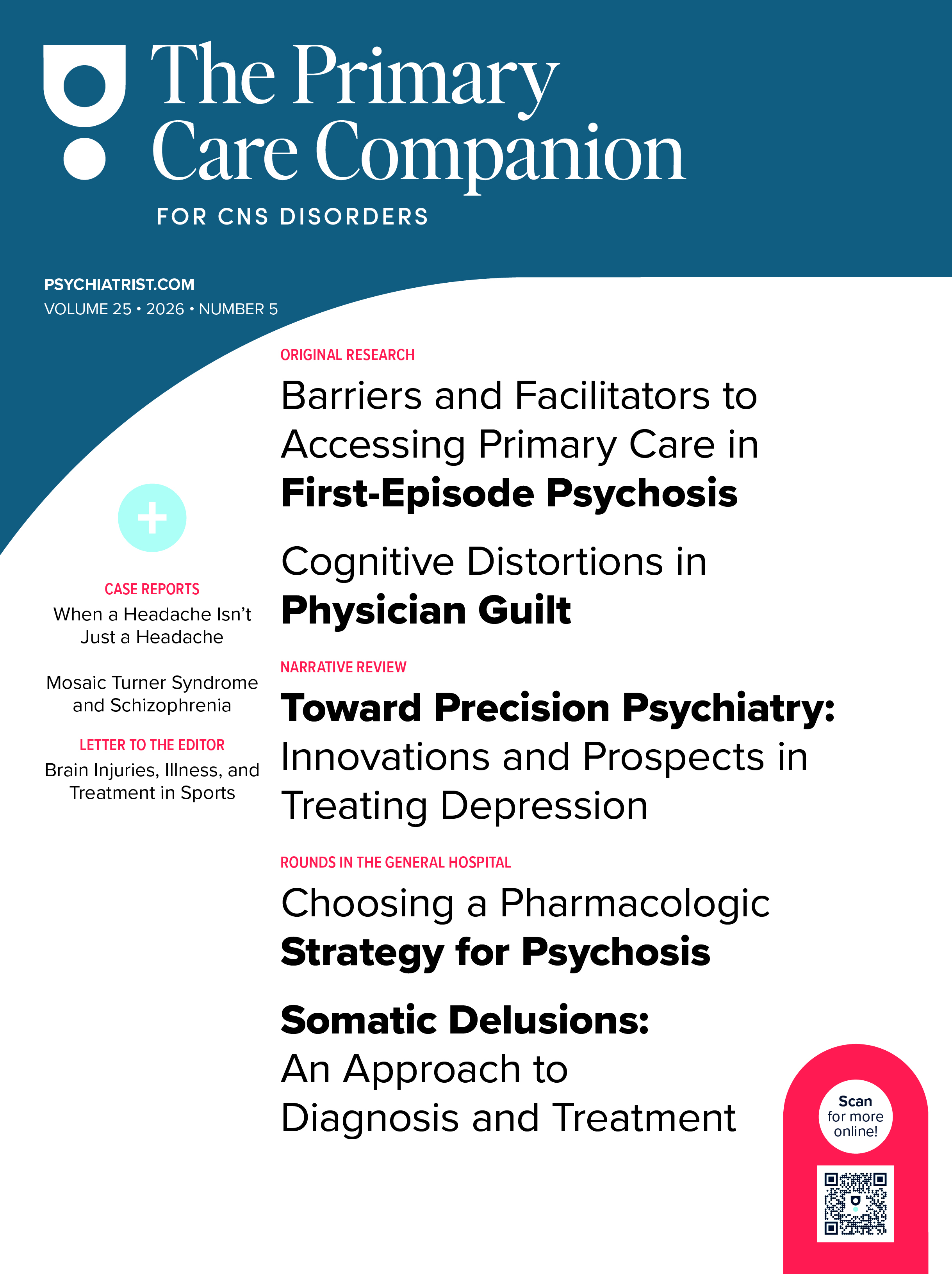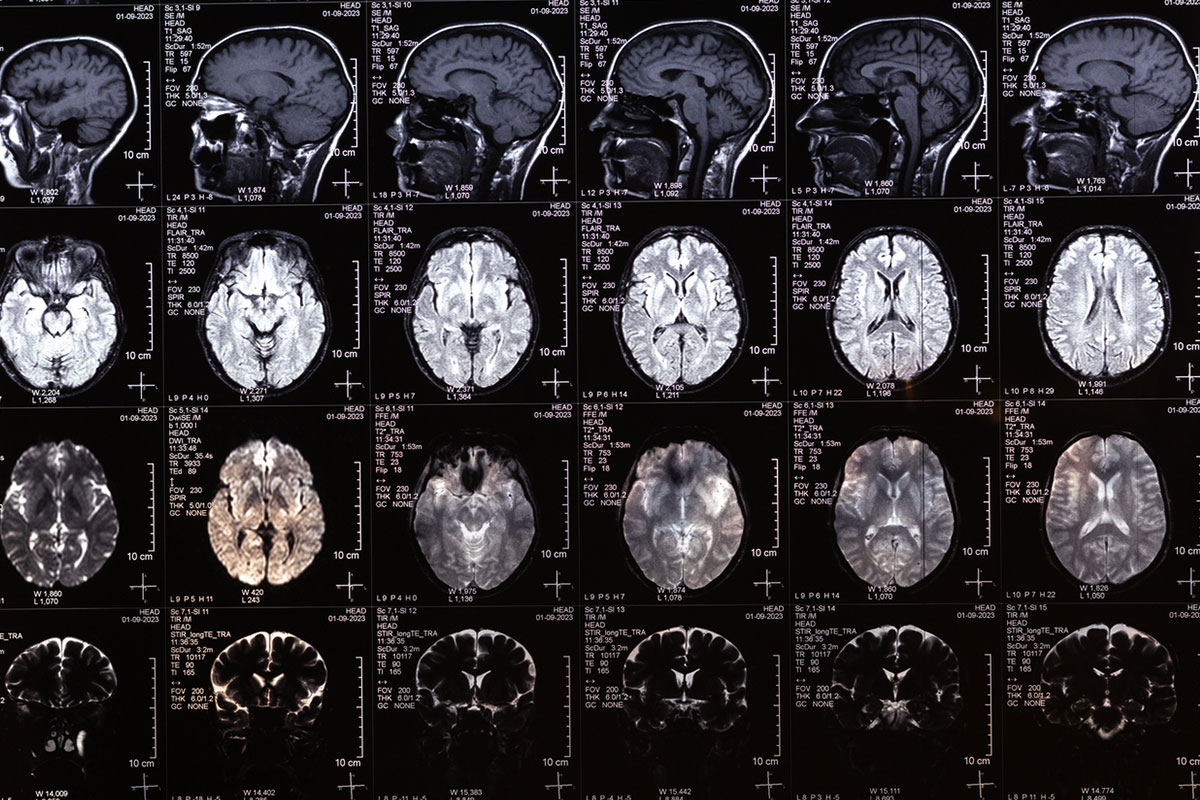Friedreich ataxia (FA) is an autosomal recessive genetic disorder, primarily characterized by progressive damage to the nervous system and the impairment of motor functions. The disorder is caused by mutations in the frataxin (FXN) gene, leading to reduced expression of FXN, a protein essential for mitochondrial function.1 The prevalence of FA is approximately 1 in 50,000 individuals worldwide, making it one of the most common hereditary ataxias. Neurological symptoms typically include gait disturbance, coordination loss, and speech problems, which generally begin in childhood or adolescence, with life expectancy being age 40–50 years.2
While the physical manifestations of FA are well-documented, the neuropsychiatric aspects, particularly behavioral symptoms, are underemphasized but can impact patient care. Patients may experience mood disorders, cognitive decline, and, less commonly, more severe psychiatric conditions.3 The presence of such symptoms complicates treatment, necessitating a multidisciplinary approach to manage both the neurological and behavioral aspects of the disease.4
The management of FA focuses on symptomatic treatment. Physical therapy aids in mobility, and speech therapy improves communication effectiveness. Medications may address common symptoms of FA such as spasticity and heart issues. Given the complexity of the disease, particularly when neuropsychiatric symptoms are present, a comprehensive treatment plan that includes psychological and psychiatric interventions is crucial. A previous case report detailed psychotic symptoms leading to rapid deterioration and ultimately death within 6 months in a patient with FA.5
Currently, there are no specific case reports directly focusing on FA with neuropsychiatric symptoms within specialized care facilities. This gap in the literature suggests a need for further clinical studies and reports to better understand and address the neuropsychiatric and behavioral management of this population. In this case report, we discuss the comprehensive management of a patient with FA in a long-term care facility, focusing on the integration of behavioral health treatments to address challenging psychiatric symptoms. This focus is pivotal, as managing these symptoms can significantly enhance the quality of life for patients with FA, despite the progressive nature of the disorder.
Case Report
The patient was a 63-year-old divorced white man with a 30-year history of FA and a family history significant for FA in his great grandmother, grandmother, mother, and uncle. He had a complex medical history including oropharyngeal dysphagia, gastroesophageal reflux disease, repeated falls, benign prostatic hyperplasia, and hypertension. He had no known allergies.
Before his move to a long-term care facility, he lived independently in an apartment with the aid of a walker. As his condition progressed, his gait worsened, necessitating a transition from a walker to a manual wheelchair. His physical examination revealed impaired sensation in both feet and significant cerebellar dysfunction, as demonstrated by severe difficulties in the finger-to-nose and heel-to-shin tests, and an ataxic wide-based gait. These findings raised substantial safety concerns, especially regarding his increased risk of falls during activities such as cooking and showering. Despite these concerns, he continued to manage independently until an acute hospitalization for pneumonia made it clear that he required a more supportive environment. Therefore, he was transferred to a long-term care facility upon discharge.
Throughout his illness, the patient experienced chronic depressive symptoms. He was treated with citalopram by his primary care provider, although adherence to this medication was inconsistent. He also had a significant history of nicotine dependence but no reported use of alcohol or illicit substances. On admission to the facility, a consultant psychiatrist evaluated him for chronic depression, characterized by sadness, anxiety, poor appetite, poor sleep, and social withdrawal. The mental status examination showed a sad mood and a blunted affect, with no evidence of emotional lability or inappropriateness. His speech was dysarthric but coherent, and no significant cognitive decline was noted.
Citalopram was prescribed at an initial dose of 10 mg/day, which was titrated up to 30 mg/day over a 4-week period. Although there was gradual improvement in his appetite and sleep, his affect remained blunted, and he continued to be socially withdrawn. To enhance the efficacy of treatment, buspirone was added, starting at 10 mg twice daily and increased to 30 mg twice daily over a 4-week period. Despite these adjustments, there was no significant change in his mood or behavior, and he reported experiencing dizziness and headaches, which were resolved after discontinuing buspirone.
At a 3-month follow-up, the nursing team noted that the patient often refused food and care, preferring to stay in bed. His behavior deteriorated further, marked by refusal to take medications, verbal aggression toward staff and his roommate, and physical aggression toward nurses and the cleaning team. The nursing team struggled to manage his behavior through verbal redirection.
Although his mood instability was significant, given the potential adverse effects of atypical antipsychotics on his motor function, such medications were not considered. Instead, divalproex extended release (ER) was prescribed, starting at 250 mg twice daily and increased to 500 mg twice daily over a 2-week period. His blood valproic acid level was measured to be 52.8 μg/mL. This adjustment led to significant improvements in mood stability and behavioral symptoms, with only mild sedation reported as a side effect. The patient continued on a combination of citalopram and divalproex ER, and there was no recurrence of neuropsychiatric symptoms.
Discussion
The neuropsychiatric manifestations of FA are often under-recognized despite their significant impact on patient care and quality of life. This case underscores the necessity for comprehensive management strategies that address both the neurological and behavioral aspects of FA. This patient residing in a long-term care facility exhibited chronic depression and significant behavioral challenges including refusal of food, medications, and nursing care, alongside physical aggression. Despite initial treatment with citalopram, behavioral symptoms persisted while the neurovegetative signs of depression improved. As the escalation of the patient’s behavioral symptoms marked a critical turning point, divalproex ER was introduced and titrated to manage his mood instability. Subsequently, the patient’s mood and behavior symptoms noticeably improved without worsening motor dysfunction, highlighting the importance of personalized psychopharmacologic interventions.
Conclusion
Managing behavioral symptoms in FA patients requires a nuanced approach that integrates psychiatric care with traditional neurological treatment. This case emphasizes the complexity of managing the psychiatric manifestations of FA along with the more widely recognizable neuromotor symptoms and highlights the importance of a multidisciplinary approach to treatment that includes psychiatric consultation. The combination of psychiatric evaluation, appropriate psychopharmacotherapy, and continuous monitoring was crucial in stabilizing the patient’s condition. Future studies should focus on detailed behavioral assessments, the efficacy of integrated treatment strategies, and the development of long-term management plans to enhance the quality of life for FA patients. Addressing these areas can lead to better understanding and treatment of this complex disorder, ultimately improving outcomes for those affected by FA.
Article Information
Published Online: October 23, 2025. https://doi.org/10.4088/PCC.25cr03965
© 2025 Physicians Postgraduate Press, Inc.
Prim Care Companion CNS Disord 2025;27(5):25cr03965
Submitted: May 13, 2025; accepted July 16, 2025.
To Cite: Wong J, Kwok J, Kim K. Neuropsychiatric challenges of Friedreich ataxia in a patient residing in a long-term care facility. Prim Care Companion CNS Disord 2025;27(5):25cr03965.
Author Affiliations: Virginia Tech Carilion School of Medicine, Roanoke, Virginia (Wong, Kwok, Kim); Center for Healthy Aging, Carilion Clinic, Roanoke, Virginia (Kim).
Corresponding Author: Kye Kim, MD, Center for Healthy Aging, Carilion Clinic, 4434 Electric Rd, Roanoke, VA 24018 ([email protected]).
Relevant Financial Relationship: None.
Funding/Support: None.
Additional Information: Information has been de-identified to protect anonymity.
ORCID: Kye Kim: https://orcid.org/0000-0003-2543-5230
References (5)

- Dürr A, Cossee M, Agid Y, et al. Clinical and genetic abnormalities in patients with Friedreich’s ataxia. New Engl J Med. 1996;335(16):1169–1175. PubMed
- Pandolfo M. Friedreich ataxia: the clinical picture. J Neurol. 2009;256(suppl 1):3–8. PubMed CrossRef
- Bidichandani SI, Delatycki MB. Friedreich Ataxia. Gene Reviews; 1998. Accessed July 10, 2025. https://www.ncbi.nlm.nih.gov/books/NBK1281/.
- Lynch DR, Schadt K, Kichula E, et al. Friedreich ataxia: multidisciplinary clinical care. J Multidiscip Healthc. 2021;14:1645–1658. PubMed CrossRef
- Ganos C, Schöttle D, Zühlke C, et al. Psychosis complicating Friedreich ataxia. Mov Disord Clin Pract. 2015;2(1):84–85. PubMed CrossRef
Please sign in or purchase this PDF for $40.





